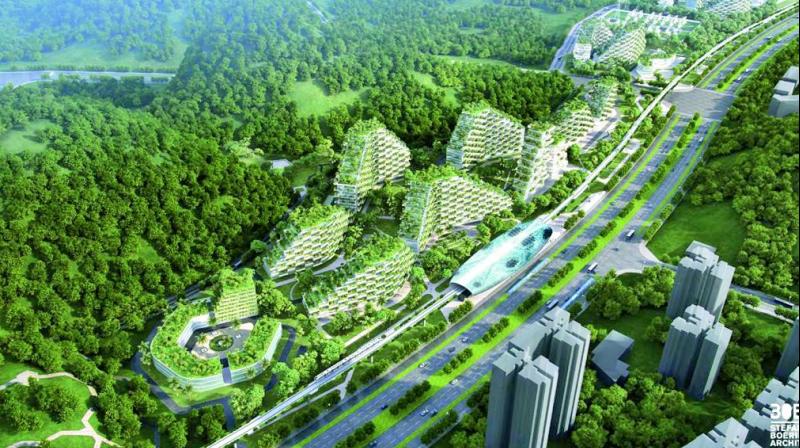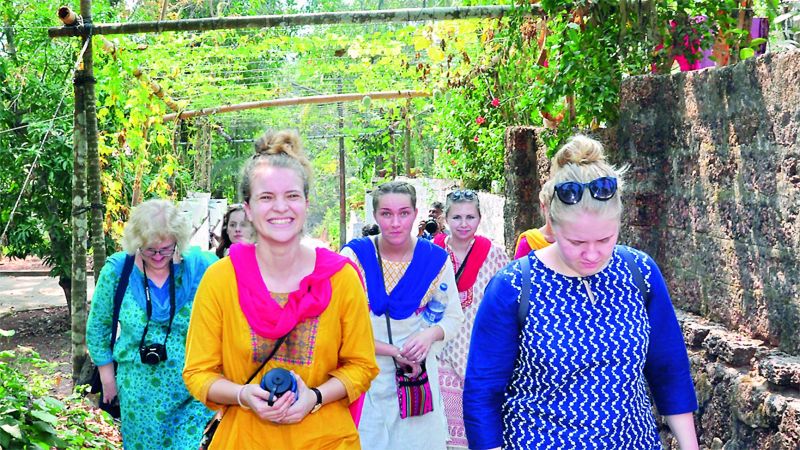Leafy towns can firefight urban heat: Urban farming boosts nutritional security
It is time we graduated from food security to nutritional security.

Edible cities, edible balcony, edible roof. Urban agriculture is about growing food on whatever space is available in urban dwellings. The stress is not to mimic exploitative food systems but revive traditional methods that leave benign impact on the environment. The way we grow, process, distribute, eat, and dispose of food contributes to climate change.
It is time we graduated from food security to nutritional security. Fruits and vegetables can be grown by individuals to supplement nutritional needs. There is something known as hidden hunger. You might be getting enough food, but the nutrients that your body needs might be absent from your food. Your food might not have sufficient iron, protein or zinc content. This is where rooftop and homestead kitchen gardens can be useful.
Urban as well as periurban agriculture can help achieve nutritional security, even as one agrees that food security needs to come from villages. Conventional agriculture needs to continue, but urban agriculture can supplement nutrients.
Rooftop farming can be taken up as a hobby or as a method to supplement the protein needs of children at home. But special emphasis needs to be laid on periurban agriculture. There is a lot of unused land surrounding cities, which can be used to cultivate onions and tomatoes.
Since their prices fluctuate, supply from periurban areas can stabilise prices. This can also ensure year-round supply.
Today, onions from Pune and Nasik feed Delhi while the land surrounding the city, mostly owned by rich people, is used to grow flowers. There has to be a change in land-use planning. Legislators and policy-makers must intervene so that there is a change in the use of periurban areas.
Rooftop gardens and periurban farmlands are very distinct from each other. Crops are grown on soil in periurban agriculture. Every inch of space and every drop of water need to be utilised. How you use it depends on the needs of the people. If there is a problem of poor nourishment, the land should be used for nutritional security.
There is a small space at my home where my wife takes care of a drumstick tree. Women are custodians of periurban horticulture. In urban settings, you can plant many varieties which grow without any difficulty. Amaranthus, annual variety of drumstick, tamarind and salad vegetables can be grown on rooftops.
The Chinese have brought out dwarf varieties of wheat, rice, maize, oranges and mangoes. These are varieties with dwarf genes and can be incorporated into your rooftop farming plan.
 Foreigners walk under vegetable pandals supporting creepers of the Niravu Residents’ Association at Vengeri in Kozhikode. These pandals are an example of urban agriculture.
Foreigners walk under vegetable pandals supporting creepers of the Niravu Residents’ Association at Vengeri in Kozhikode. These pandals are an example of urban agriculture.
Can organic farming be useful in urban agriculture? Yes, it is feasible, as long as you have your own cows and buffaloes. Else manure costs are high. You can even get high productivity from organic farming, if you use good organic manure. Urban compost can be prepared from various organic matter. Cow dung and urine can be recycled into soil. Crop and animal husbandry can go hand in hand.
Urban and periurban agriculture can make use of hi-tech support. You need to maximise yield per unit of land as well as per unit of water. Drip irrigation and poly-house farming can be explored with the help of experts. In periurban agriculture you can combine horticulture with aquaculture.
Climate change is a complex issue and it is caused primarily by emissions. One cannot say whether chemical fertilisers caused it because it cannot be simplified in that manner. But in order to mitigate the effects of climate change, one can go for an organic fertiliser like bean decoction, which is also a good pesticide. Tobacco decoction can also be used.
Grow local, affordable food
The 2013 Trade and Environment Review, published by UN Commission on Trade and Development, underscored the importance of governments focusing on smaller farmers producing food organically for local consumers. “Wake up before it’s too late,” says industrial agriculture, which is usually monoculture agriculture as well, has failed to provide affordable food. In addition, the damage it causes to environment is “mounting and unsustainable”. It suggests local production and consumption of food.
Forest city
Last year, the Chinese government approached Italian architect Stefano Boeri to build the world’s first ‘Forest City’. Boeri’s most famous work is ‘Bosco Verticale’ (Vertical Forest), a skyscraper complex in Milan covered with trees. China wanted that work to be replicated in two towers in Nanjing with 23 tree species and 2,500 shrubs covering it and absorbing the city’s polluted air. However, the Forest City takes this idea to a different level. An urban area with hundreds of buildings will be clad in trees. The first such forest city is planned in Luizhou.
Dos and Don’ts of terrace farming
- Choose sunny pockets, though one would be keen to use every possible space like even those that are shaded because of trees or the roof. Vegetable plants are usually sun-loving.
- Prepare potting mixture with extra caution. Ideally keep it organic. Use of chemical fertilizer can spill on to terrace. Hairline cracks will cause chemicals to react with building materials.
- Arrange plants in such a way that one can walk through plants and irrigate them without much difficulty. Vegetable gardens have aesthetic value, affording peaceful ambience.
Preventive measures help check diseases. While planting, ensure soil pH value is neutral. Acidic soil aids in growth of soil-bound pathogens and inhibits plant growth.
Water collection under growbags damages building. Place growbags on bricks to let excess water drain.
Plant tulsi and pudina have ecological importance, alongside vegetables. These ward off pests. Intersperse garden with flowering plants.
Set up rain shelter for cultivating plants during the rains.
(The author is Father of Indian Green Revolution. He is recipient of the first World Food Prize, in 1987. A geneticist, he helped introduce Mexican semi-dwarf wheat plants to Indian fields. He now spends time at the Swaminathan Foundation)

